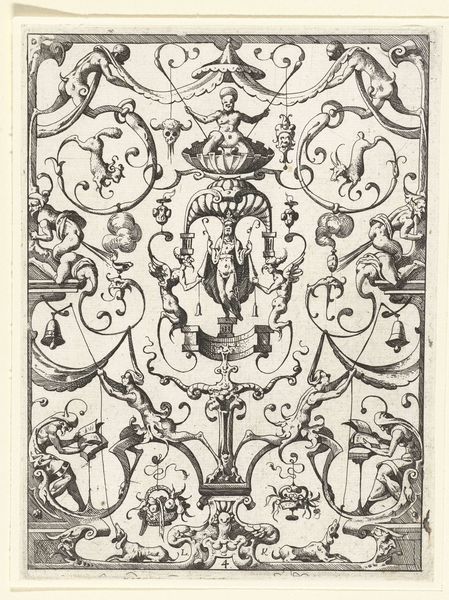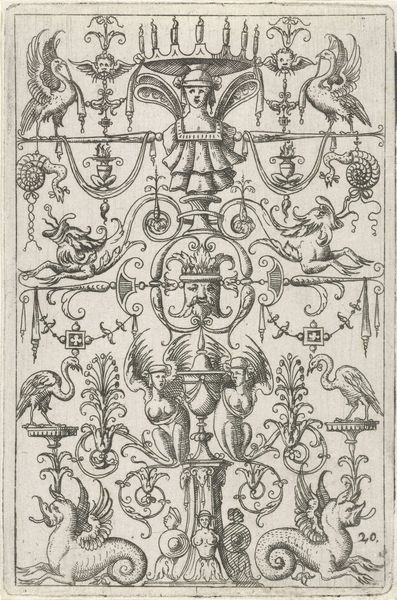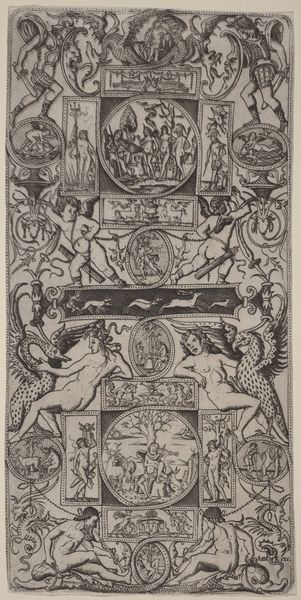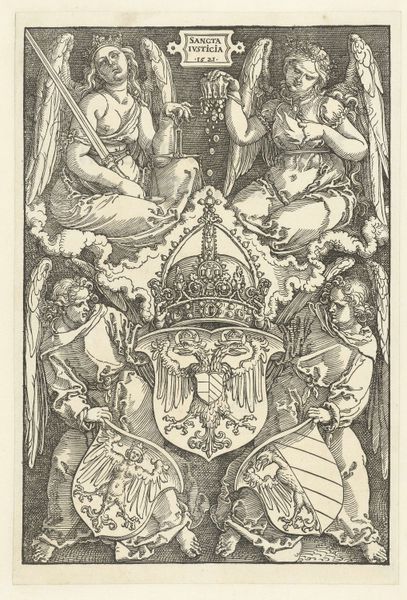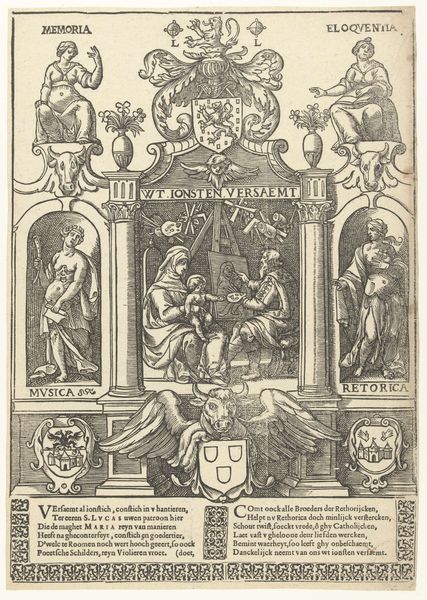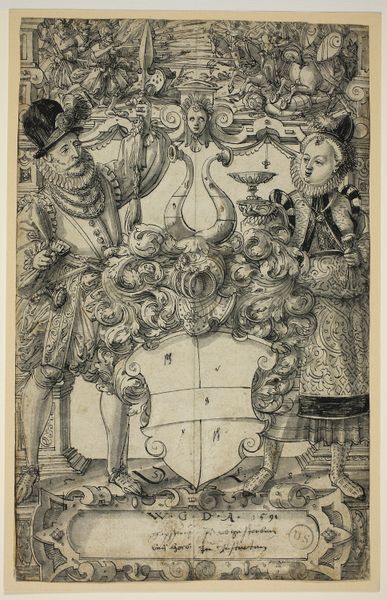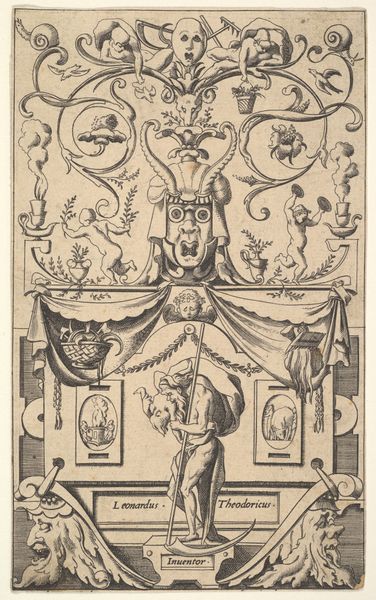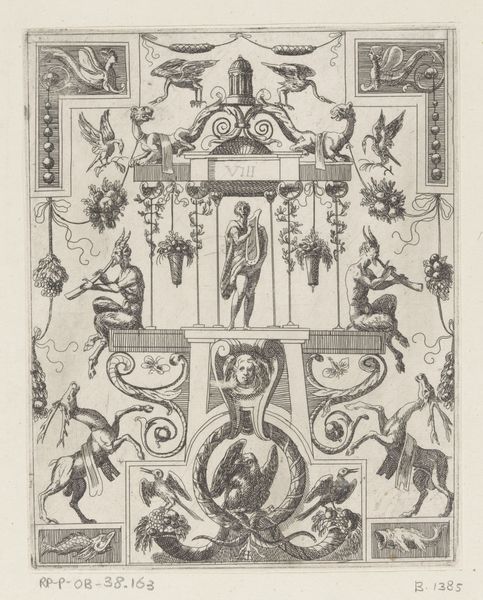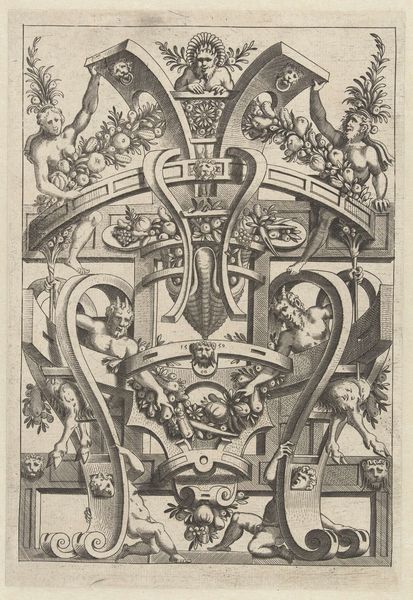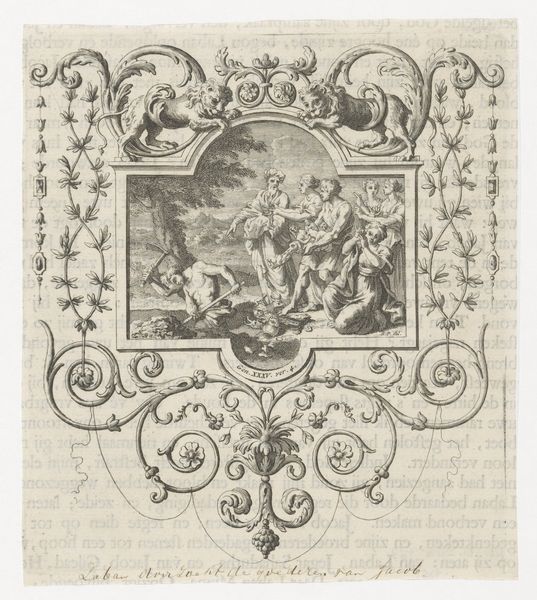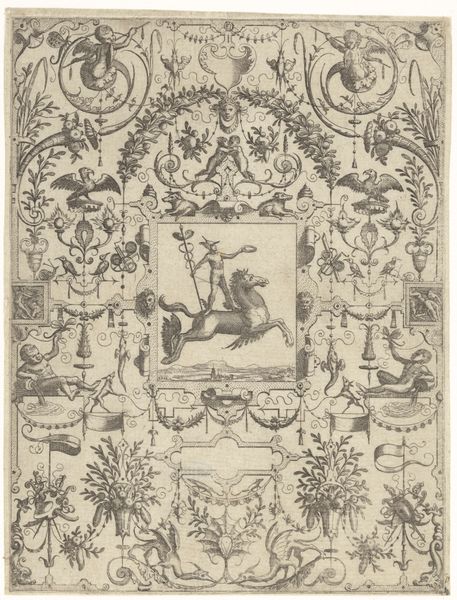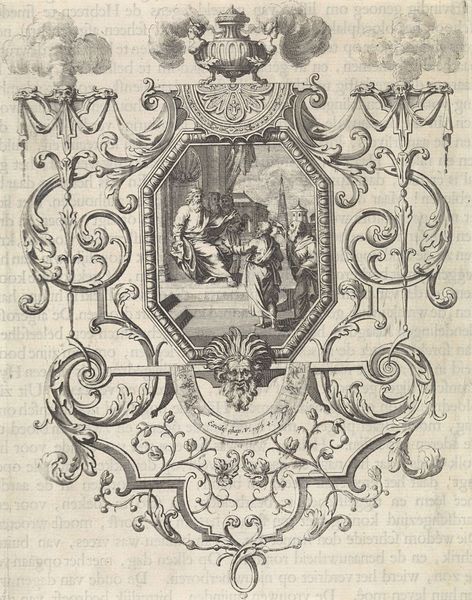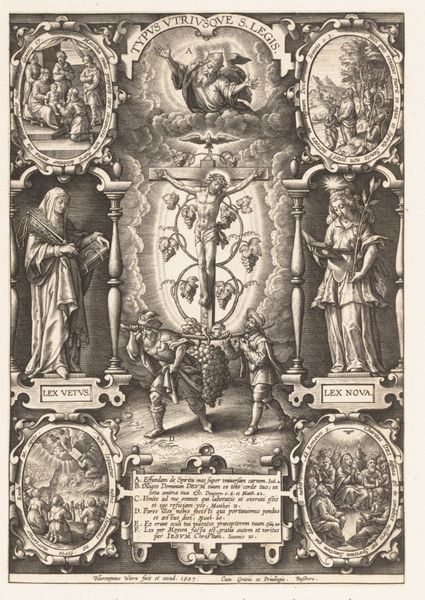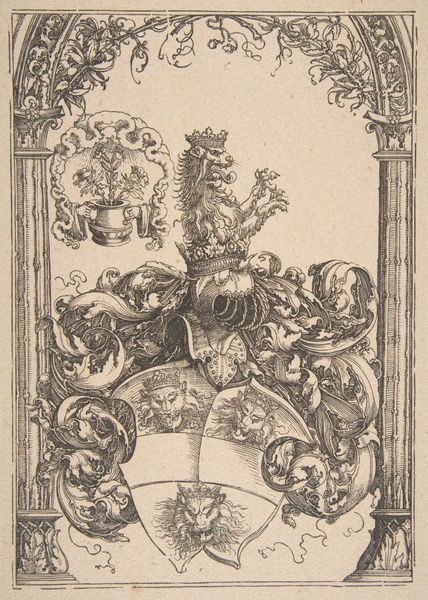
drawing, print, engraving
#
drawing
#
pen drawing
# print
#
figuration
#
11_renaissance
#
italian-renaissance
#
engraving
Dimensions: 7 7/8 x 5 7/16 in. (20.0 x 13.8 cm)
Copyright: Public Domain
Curator: Wow, what a whirlwind of ornamentation! My eyes are bouncing all over the place, trying to find a still point. It’s dizzying in the most delightful way. Editor: Indeed! You’re observing Agostino Veneziano’s “Ornamental Panel,” created sometime between 1514 and 1536. This engraving, currently residing at the Metropolitan Museum of Art, encapsulates the Italian Renaissance obsession with classical motifs, reworked in a playful composition. Curator: "Playful" is definitely the word. Those winged sphinxes at the bottom are giving me mischievous vibes. And the dogs, are they running away with little pots? What does it all mean?! Is this supposed to be serious? Editor: Serious? Perhaps not in the way a somber portrait might be. We need to consider the historical and cultural contexts. As an engraving, it would’ve likely served as inspiration for craftsmen or designers. Think of it as a pattern book of sorts—a visual compendium of design elements. You've got scrolling acanthus leaves, winged putti, classical figures… Curator: Oh, so like a sixteenth-century mood board! A Pinterest for artisans? I love that. It feels almost tongue-in-cheek, the way he mashes all those established images and icons together into a brand-new package. But then why that very serious, somewhat gloomy mask smack in the middle? It creates this kind of gravity in the most unexpected location. Editor: The mask, positioned centrally, adds a dramatic element amidst the decorative excess, functioning as a vanitas symbol—a reminder of life's fleeting nature within all this beauty and order. It lends gravity, as you put it, playing on themes of mortality and temporality, all cleverly integrated within what might otherwise seem like purely decorative flourish. Note the cherub directly above the mask; such contrasts are a critical ingredient. Curator: I guess even Pinterest has its moments of existential reflection. I’m getting a much richer feeling for it now; this is a lot more complicated than just surface decoration. The composition somehow marries elegance and the macabre. It’s a total Renaissance power-move of beauty and brain. Editor: Absolutely. Through understanding its context, structure, and historical moment, we reveal the complexity of Veneziano's vision and intention. I think that appreciation enriches our perspective in so many ways. Curator: Agreed. Now, where can I get my hands on some winged sphinxes for my own decor? Asking for a friend...
Comments
No comments
Be the first to comment and join the conversation on the ultimate creative platform.
